Recipe for Florence
June 17, 2007
Sorry to be gone for a while there. I spent a week in Tuscany, south of Florence, to attend my brother’s wedding. I had heard nice things about this region, which, surprisingly, were true.
Florence and Siena, in particularly, were very beautiful and a great joy to travel around. Just about everyone who goes there would no doubt agree — and there are a lot of them. The place is crawling with tourists, upon which 60%+ of the local economy is based. Anyone can instinctively enjoy a beautiful city, even though they may not know exactly what it is they are enjoying. However, if you want to be able to produce something yourself, which is similarly enjoyable, you have to understand how the aesthetic effect is created. It is much easier to be a diner than a cook, even though both can appreciate good food. We are interested here not in merely enjoying these places, but learning why they “taste” the way they do and how to create a similar effect on our own. Why are Florence and Siena so lovely?
There isn’t really even a name for what I am talking about today. “Architecture” has tended to mean buildings individually considered, a natural adjunct of the construction industry. The broader urban fabric has been reduced to “urban planning,” which is generally thought to be a civil engineering problem akin to sewage, water, and trash collection. Let’s call it City Design for now.
I like to boil down concepts into very small sizes. This promotes clear thinking and reduces confusion. We’ve boiled down the study of economics to:
Low Taxes, Stable Money
Four words. I boiled down the study of City Design to:
This really is simplistic, but let’s see what I mean in real life.
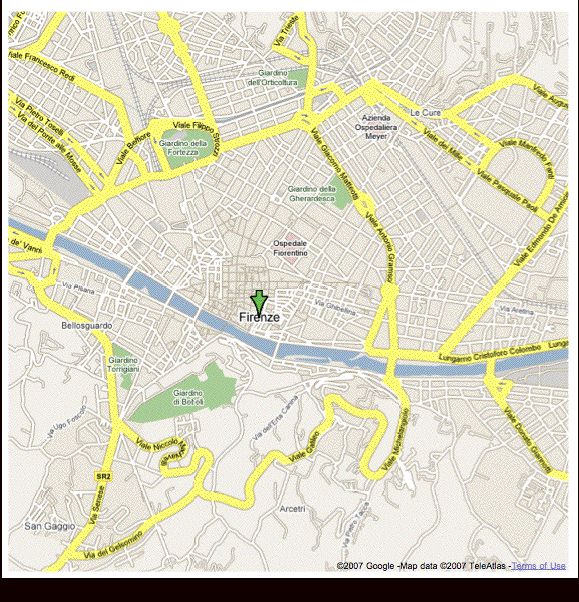
Do you see the yellow ring road? That roughly divides Old Florence from the surrounding city. The outer bits are typical 20th century European development, which is — OK — and much better than the strip mall automobile slums in the US. But people don’t get on a plane and fly across the Atlantic to visit those parts. Let’s focus on the city center.
The interesting thing here is the scale. The area contained within the ring road is about three kilometers across. Two miles. It’s really not very big. Indeed, the total population of Florence, today, is about 190,000. Peanuts. As I have said, you can have a very small city (like Florence, or, as we will see, Siena) with a wonderful urban environment, and you can have a giant megalopolis like Los Angeles (12 million) that’s not really an urban environment at all, but a gigantic automobile slum.
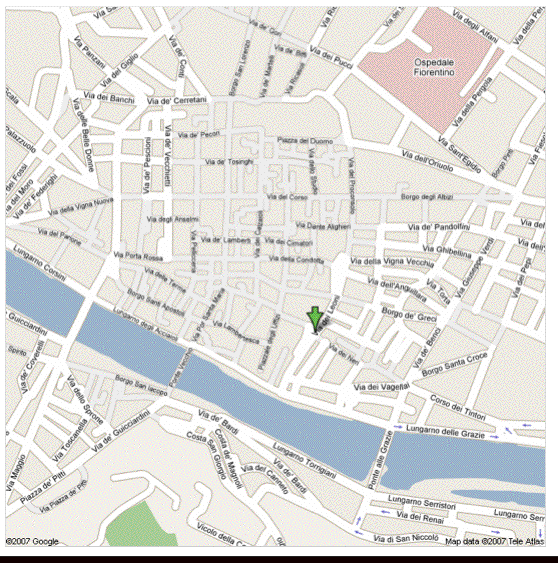
This is the center of Old Florence. Do you see the Really Small Streets? This map is roughly 1.2 kilometers across. You could walk from one edge to the other in 15 minutes.
This is the same map as above, same scale, from satellite:

Here we can see all the Really Narrow Streets and buildings packed together. What fun! It’s like a party with lots of people. This is what makes Florence worth visiting, in my opinion. I suppose other people would point to the wonderful museums and so forth. The artsy stuff is more like the cherry on top of the hot fudge sundae, if you ask me. There are excellent museums in virtually every major US city. I could visit the Met in New York this afternoon. This is not the reason people get on a plane to fly to Florence. It’s nice once you’re there, though.
Another thing about the Really Narrow Streets is not only that they are Really Narrow, but that they are rather disjointed and unorganized. That makes things much more interesting than the grid pattern which became popular in the 19th century. This “unorganized” pattern doesn’t really create any problems, unless you are trying to drive. Maybe the problem then is not the “unorganized” streets, but that you are trying to drive in a pedestrian environment? Duh.
I also like Florence because it is a medieval city. It has been around a long time. So I don’t have to hear whining about “unsustainability” by the “sustainable development” crowd, who are all convinced that nothing will work except their Small Town America fantasies. Florence (or Athens, or Paris, or Rome) has been around a lot longer than Small Town America, which popped up only briefly and essentially no longer exists. Maybe it was unsustainable? I’ll take Florence over their New Suburbanist offerings any day.
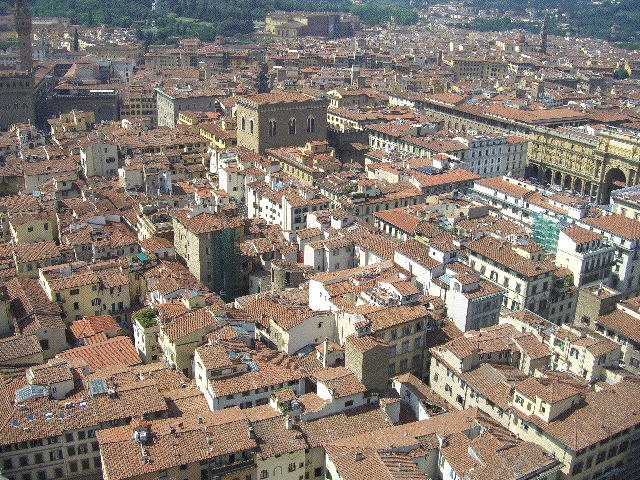
Take a good look. Here we can begin to see the City Design of Florence. Buildings are packed tightly together. They are about 3-6 stories tall, for the most part, the limits of accessibility without elevators. There is a high degree of architectural (building design) continuity. This is part of the Recipe for Florence: terra-cotta roof tiles, flat walls of an off-yellow color, etc. This architectural similarity is part of the flavor of the city, but, I claim, it is not necessary to make a wonderful city. We look at Florence and say “ah, look at the wonderful architectural wholosity of it.” We could look at another city, with a lot of architectural variety, and say “ah, look at the wonderful variety of it.” Another interesting thing is, despite the similarity of aesthetic palette, there are some very interesting, complicated buildings here.
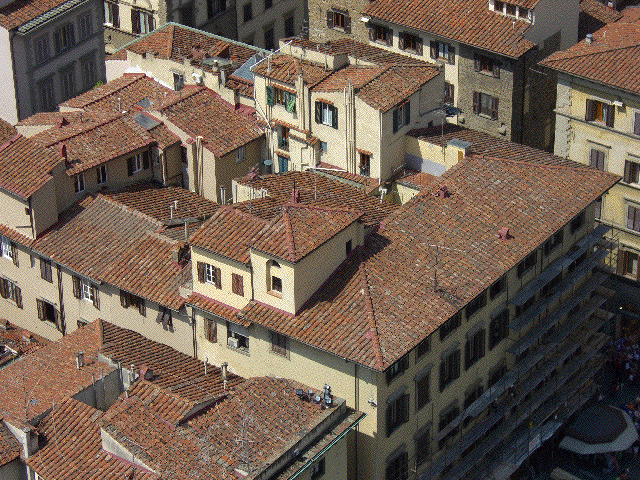
They aren’t just rectangular boxes, that’s for sure!
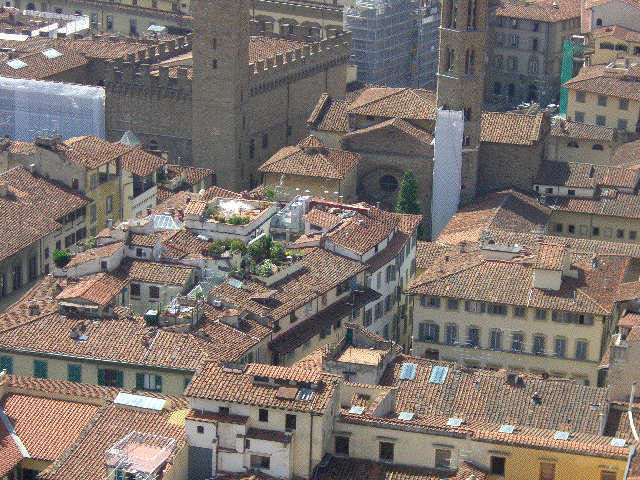
The interior courtyards are very lovely, much nicer than the surburban “front yard.”
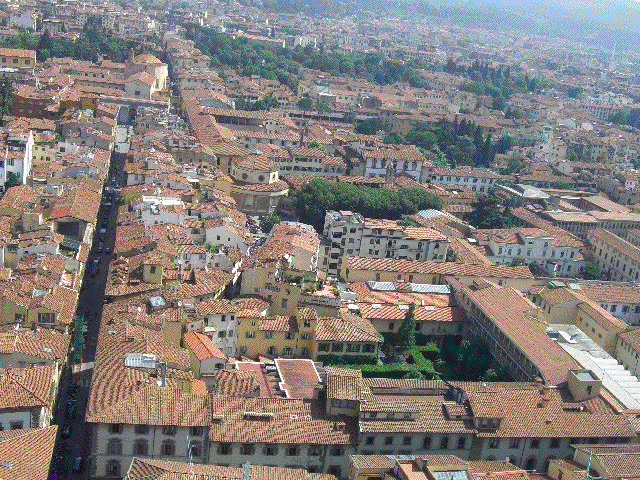
So far we haven’t look at any “name buildings.” These are just “normal” buildings. Most of them were built before 1800 — by hand. No fossil fuels, electricity, power tools, etc. Normal people lived OK, no?
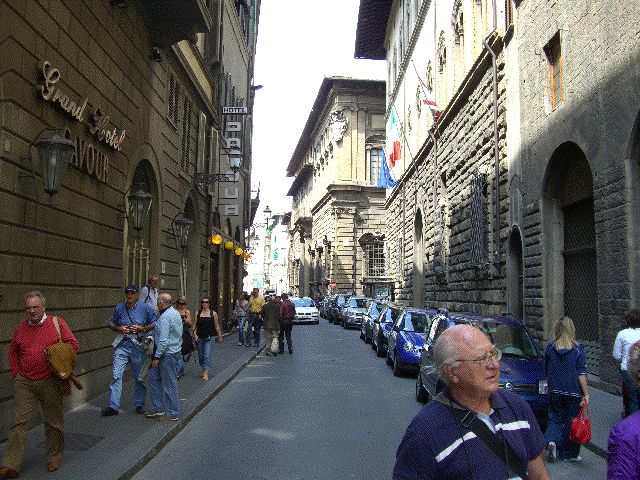
A typical street. Note that it is Really Narrow. Also note, as a consequence, that there is essentially no traffic. This, I believe, is absolutely fundamental to creating lovely pedestrian environments like Florence.
As a contrast, consider Midtown Manhattan. New York is a much bigger city, and even, considering the skyscrapers, possibly more dense than Florence. However, the streets in New York, as was the fashion during the 19th century, are quite wide and, as a consequence, filled with cars. Thus the impression of streets in New York is overwhelmingly CARS CARS CARS, which makes the feeling unpleasant and “crowded.”
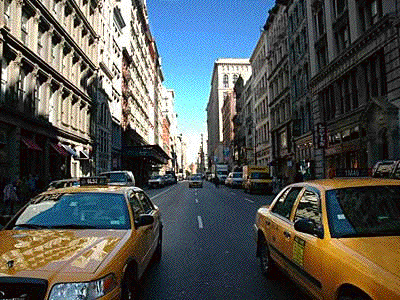
A typical Manhattan scene with four lanes of traffic. Ugh. Definitely NOT a Really Narrow Street. Of course there are some places in Manhattan with Narrow Streets (not Really Narrow alas), and I would point out that these tend to be popular travel destinations: Soho, Chinatown, Lower Manhattan (Nassau Street etc.). These are somewhat the exception rather than the rule in New York, however.
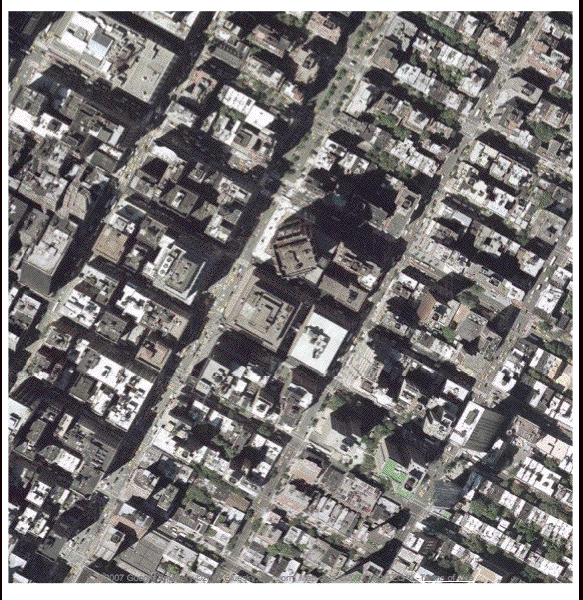
Midtown Manhattan.
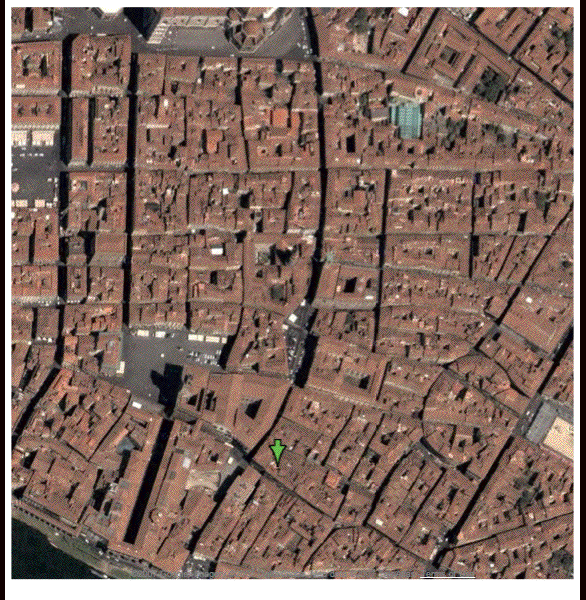
Central Florence. These photos are at exactly the same scale. Each photo is about 600 meters across. Do you see what I mean about Manhattan being very dense, but with Big Streets and CARS CARS CARS, while Florence has Really Narrow Streets and is FUN FUN FUN?
For comparison, this is a 1960s-style surburban automobile slum in the Los Angeles area:
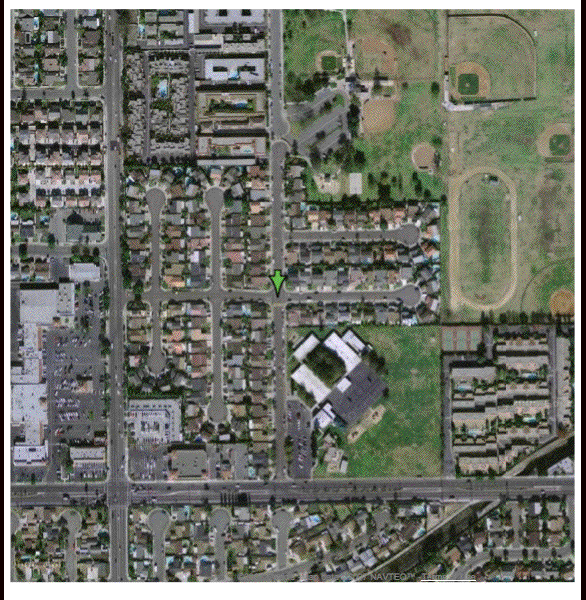
Maybe this doesn’t make much impression on most people, but it makes me queasy just looking at it. (I grew up in a house just to the right of the green arrow, and, actually, it seemed pretty nice at the time. The nearby park was a plus.) The scale is identical to the above, about 600 meters across the picture.
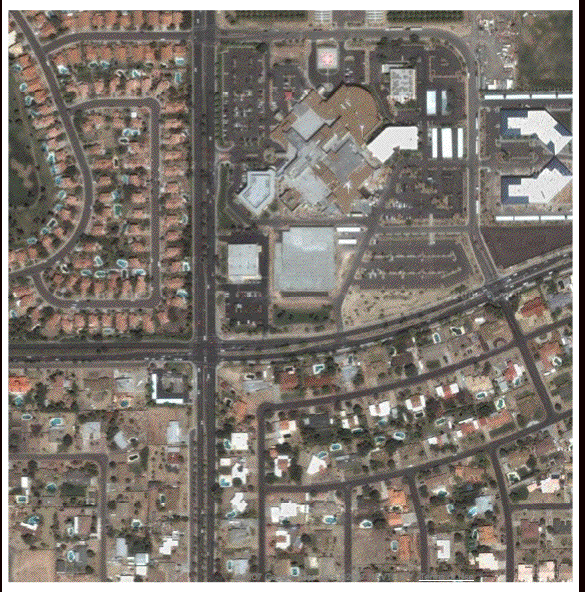
This is a 1980s-1990s automobile slum outside of Phoenix. Eccch. Doesn’t it make you want to get on a plane and go to Florence? You and millions of other people as well, apparently.
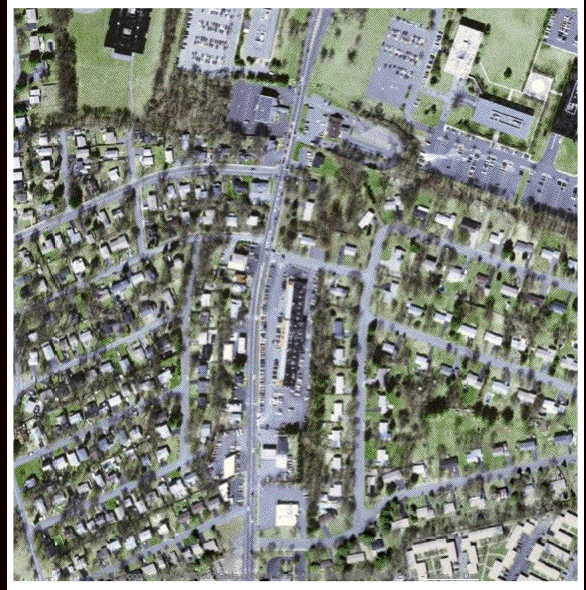
Parsippany, New Jersey. The horror. Quick, back to Florence!
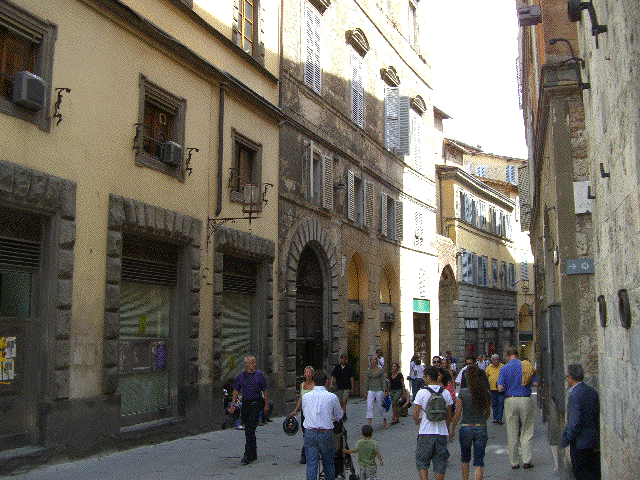
Ahh — that’s better. I thought I was going to hurl there. Gimme more of those Really Narrow Streets. And where’d the cars go? Who cares — I like the happy smiling people better.
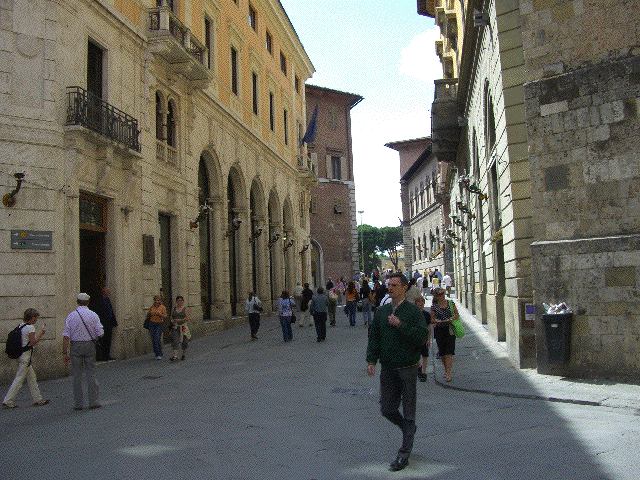
I sure like PEOPLE PEOPLE PEOPLE better than CARS CARS CARS.
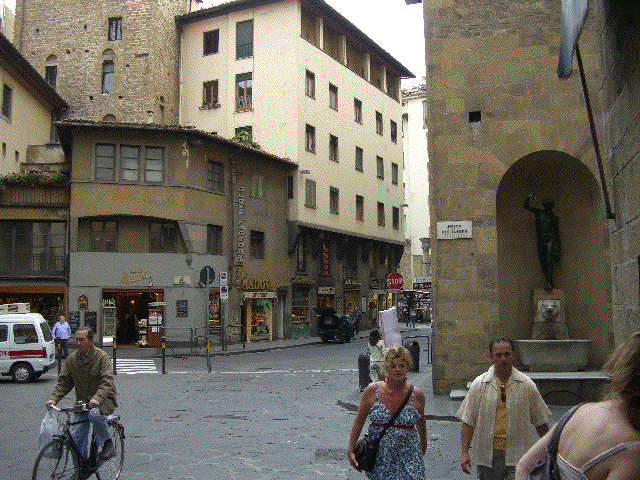
What a lovely place.
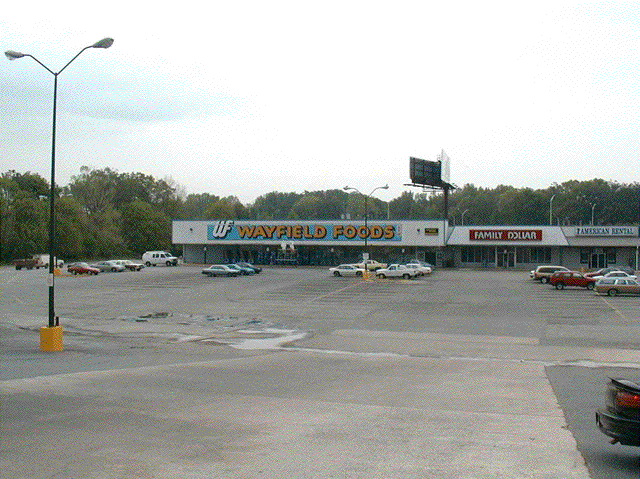
Heh heh — just thought I’d slip that one in there. Care for some Prozac? It is really not necessary to build this crap.
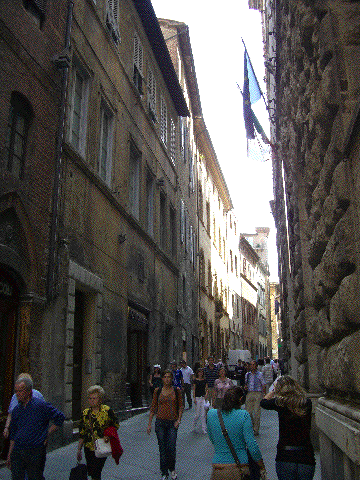
Better than Prozac. There is almost no limit to how narrow you can make a street. It just keeps getting better.

This one’s about four feet wide. Looks fun, no? There are little shops along here. This is a small village outside of Florence, and this street was made during the Middle Ages. Lots of good City Design from the Middle Ages, actually. The population of this village is maybe 10,000 — tops. But they have marvelous Urban Areas and City Design. Urbanism is really about — rhymes with Billy Harrow Sheets — and not gazillions of people. Although, you can have gazillions of people and — Silly Tarrow Beets — and the result is gazillions of people having a good time! This was built a thousand years ago, but we can’t build this today because — because — because —
We are extremely stupid.

This is another small town outside Florence. The population is again maybe 10,000-20,000. The point here is that they have a lovely urban area, like a little piece of Florence, which consists of — Willy Larrow Meats — and multistory buildings with terra-cotta roofs, and then there is an immediate transition to a rural landscape of fields and agricultural villas. As I’ve said before, I like things that are both More Urban and More Rural, and here we have both Urban and Rural side by side, without the endless automobile slums in between.
.
Okay, that is more than enough for this week. I still have plenty of material from our trip for future episodes.

